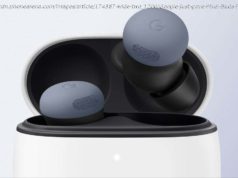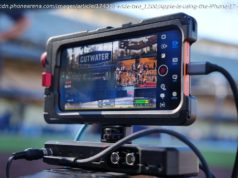 The internet of things (IoT) presents an opportunity for enterprises to rewrite the rules of their industry. The potential upside is massive: According to research firm Gartner, there will be nearly 20 billion devices on the IoT by 2020, and IoT product and service suppliers will generate $300 billion+ in revenue.
The internet of things (IoT) presents an opportunity for enterprises to rewrite the rules of their industry. The potential upside is massive: According to research firm Gartner, there will be nearly 20 billion devices on the IoT by 2020, and IoT product and service suppliers will generate $300 billion+ in revenue.
[ 8 tips for building a cost-effective IoT sensor network ]
Rossman, who spent four years launching and then running Amazon’s Marketplace business, and who was also ran Amazon’s Enterprise Services business, initially set out to create a specific roadmap to help companies approach IoT. But in the course of developing the book, he realized that methods are highly situational. Principles, on the other hand, provide vision that allow leaders to develop an IoT strategy customized to their unique needs.
„I think of IoT in layers,“ Rossman says. „In one way, it’s the technology component, the sensors that are connected to cloud computing and analytics that are able to make optimizations that go back out to devices in the field. On the next level, it’s really the use case that can be enabled. Whether its consumer or more industrial and business-to-business scenarios, there’s a set of developing use cases that come up. At the third level, it’s really the business models that can be developed, morphed and changed because of these insights and the ability to be always on. “
Rossman recommends that business leaders focused on IoT think of it as a journey, not a single step.
„You don’t implement IoT,“ he says. „This is an ongoing portfolio or program or overarching strategy for a company. It’s a journey: how IoT is impacting your industry, where investors are going, where competitors are going. “
Here are the 10 principles Rossman believes you should take into account when developing your IoT strategy. „They aren’t all applicable to every company, but they do need to be contemplated,“ he says.
First and foremost, Rossman says, pursue IoT projects only if you’re obsessed about your customers, their experiences and how you can use connected devices to solve their problems.
„Connected devices and sensors give yet another vehicle to improve the customer experience,“ he says. „If it improves the customer experience, that’s probably enough business rationale to proceed with it. Figure out how to monetize it afterward. “ Leaders start with the customer and work backward, Rossman says, and they work tirelessly to earn and keep customer trust.
At Amazon, he says, „obsession“ means a willingness to do really hard things just to make life easier for customers, even if those things won’t drive short-term profit. It also means constantly reevaluating the customer experience and never settling for „good enough. “
In an IoT-enabled world, your customers will interact with you across a series of platforms and devices. „You need to focus on the omnichannel experience when you connect across channels and experiences,“ Rossman says. „Providing that seamless customer experience is a really important part of improving that customer experience. “
The key to creating great omnichannel experiences is to master information continuity, Rossman says. For instance, if a customer has a faulty connected vacuum cleaner and calls one of your customer-service agents, that agent should already be able to see where the vacuum cleaner is and what’s wrong with it — better yet, that agent could contact the customer proactively with a solution.






